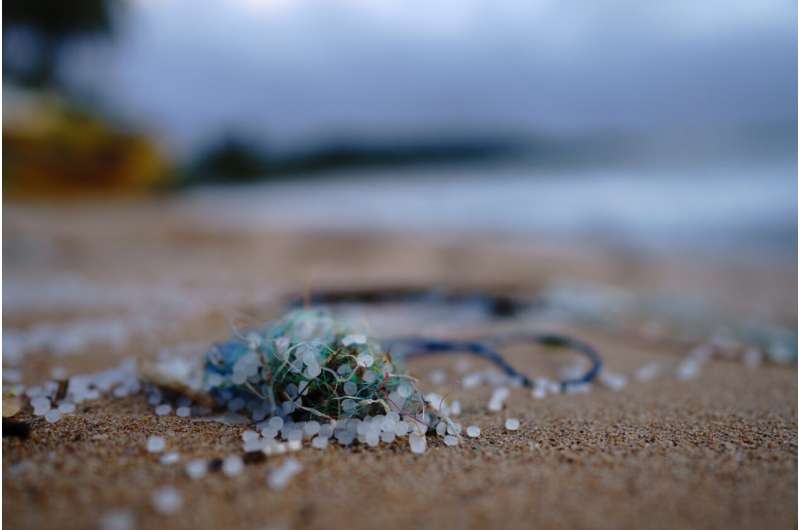To address the growing issue of microplastics in the Great Lakes, we need to curb our consumption

You would be hard-pressed to find a corner of the world free from , . They contaminate our drinking water, accumulate in the food we eat and have been found in the , including in , organs, , and .
In April, delegates from across the world came together in Ottawa to develop a legally binding international treaty on plastic pollution. The meeting offered a unique opportunity to identify strategies for addressing the human and environmental health impacts of plastics, including microplastics.
But do we really know what it would take to mitigate the rising amounts of microplastics in the environment?
In the Great Lakes, : 86% of litter collected on Great Lakes beaches is . This is worrisome, given . Yet, recent studies show levels of microplastics reaching up to thousands of particles per cubic meter in some areas of the lakes.
Mismanaged plastic waste
Improving waste management alone is unlikely to address microplastic pollution in the Great Lakes. Consider one of the most common pieces of litter on a beach: a 500 ml plastic bottle. If that bottle is not picked up and placed in a landfill or recycled, over the years it will break down into microplastics; the complete disintegration of the bottle into 100 micrometer-sized particles would produce 25 million microplastics.
Based on reported concentrations of microplastics and of the Great Lakes, we can estimate the yearly amounts of plastic that need to be entering the lakes to match the concentrations of microplastics currently observed.
For Lake Superior, this adds up to the same mass of plastic contained in 1,000 bottles. But . For Lakes Huron, Michigan, Erie and Ontario, the corresponding estimates are 3,000, 2 million, 18,000, and 9 million bottles, respectively.
, Canadians living in the Great Lakes Basin throw away more than 1.5 million tons of plastic waste each year, equivalent to 64 billion 500 ml bottles. If we include the United States, the total amount of plastic waste in the Great Lakes Basin rises to (or 821 billion 500 ml bottles).
For Canada and the U.S., the fraction of .
According to our calculations, this means that it would take less than 0.001% of the total mass of plastics consumed annually within the Great Lakes Basin to generate the number of microplastics present in the lakes. In other words, just 0.02% of the mismanaged plastic waste already explains the microplastic concentrations in the Great Lakes—the other 99.8% ending up as macro- to micro-sized litter in soils, waterways, ponds, beaches and biota.
What these calculations imply is that the shedding of even very minor, and arguably unavoidable, microplastic particles over the lifetime of a product can lead to significant accumulations of environmental microplastics, including in areas far removed from their source.
While better plastic waste management can help alleviate microplastics pollution, we should not count on it to bring down the microplastics concentrations in all five Great Lakes.
Curbing pollution
Microplastic pollution comes not only from plastic litter in the environment, but also from plastic that is thrown in the trash bin. Even long-lived plastics, such as those that are used in the construction industry, shed microplastics through natural wear and tear.
Once they enter an ecosystem, microplastics become extremely . Recycling is the best option currently available, but even this process .
At present, . With plastic production , achieving a —where all plastic produced is recycled without shedding microplastic particles—faces huge economic, social, environmental and technological challenges.
And it would take many years to establish such a system, all while microplastic pollution continues to worsen. If we are serious about reducing microplastics concentrations in the environment, the reasonable course of action would be to start reducing and consumption now.
Provided by The Conversation
This article is republished from under a Creative Commons license. Read the .![]()




















